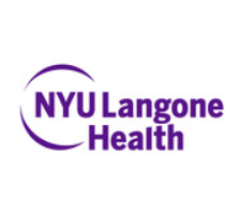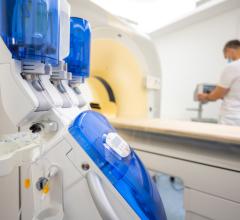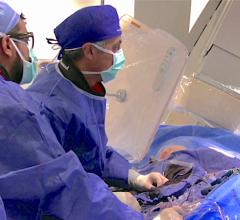
April 1, 2009 - Endovascular aortic repair (EVAR) used to repair ruptured abdominal aortic aneurysms (RAAAs) had a significant mortality benefit, according to five-year study published in the April issue of the Journal of Vascular Surgery.
The study, conducted by researchers from the University of Massachusetts Memorial Medical Center’s division of vascular and endovascular surgery in Worcester, examined the national frequency, predictors, outcomes, and the effect of institutional volume metrics in cases where endovascular aortic repair (EVAR) was used to repair ruptured abdominal aortic aneurysms (RAAAs) between 2001 and 2006.
Over the years EVAR has gained wide acceptance for the elective treatment of abdominal aortic aneurysms (AAA). This success has led to increased interest in similar treatment of RAAAs, because most patients who suffer a RAAA do not survive long enough to obtain medical care. The mortality rate for patients who do survive and undergo traditional open surgical repair continues to exceed 40 percent.
In this study, an estimated 27,750 hospital discharges for RAAA occurred, of which 11.5 percent were treated with EVAR. Data was secured through the Nationwide Inpatient Sample to evaluate operative outcomes.
"While the incidence of RAAA remained fairly constant, EVAR was used to treat RAAA in an increasing proportion of patients - from 5.9 percent in 2001 to 18.9 percent in 2006," said Andres Schanzer, M.D., assistant professor of surgery in the division. Researchers found that EVAR was independently associated with a lower postoperative mortality risk than was open repair (31.7 percent versus 40.7 percent).
"Elective surgery was the strongest predictor of the use of EVAR for RAAA repairs," added Dr. Schanzer. "The use of EVAR for RAAA also increased in patients more than 80 years of age. Additionally, EVAR patients had a shorter length of stay (11.1 vs. 13.8 days for open repair); more discharges to home (65.1 percent vs. 53.9 percent); and lower hospital charges ($108,672 vs. $114,784)."
Procedure volume was determined for each institution where hospitals were categorized as low, medium or high volume. Researchers noted that even after adjustment for hospital surgical volume characteristics, teaching hospitals continued to show lower mortality risks following RAAA repair than non-teaching hospitals.
Dr. Schanzer said that the study results support regionalization of RAAA repair to high volume centers whenever possible and a wider adoption of endovascular repair nationwide. "Through such a system appropriate patients could be rapidly transferred to institutions with EVAR capabilities, thus potentially decreasing the in-hospital mortality rate for this critically ill patient population," he added.
For more information: www.jvascsurg.org


 August 14, 2025
August 14, 2025 








